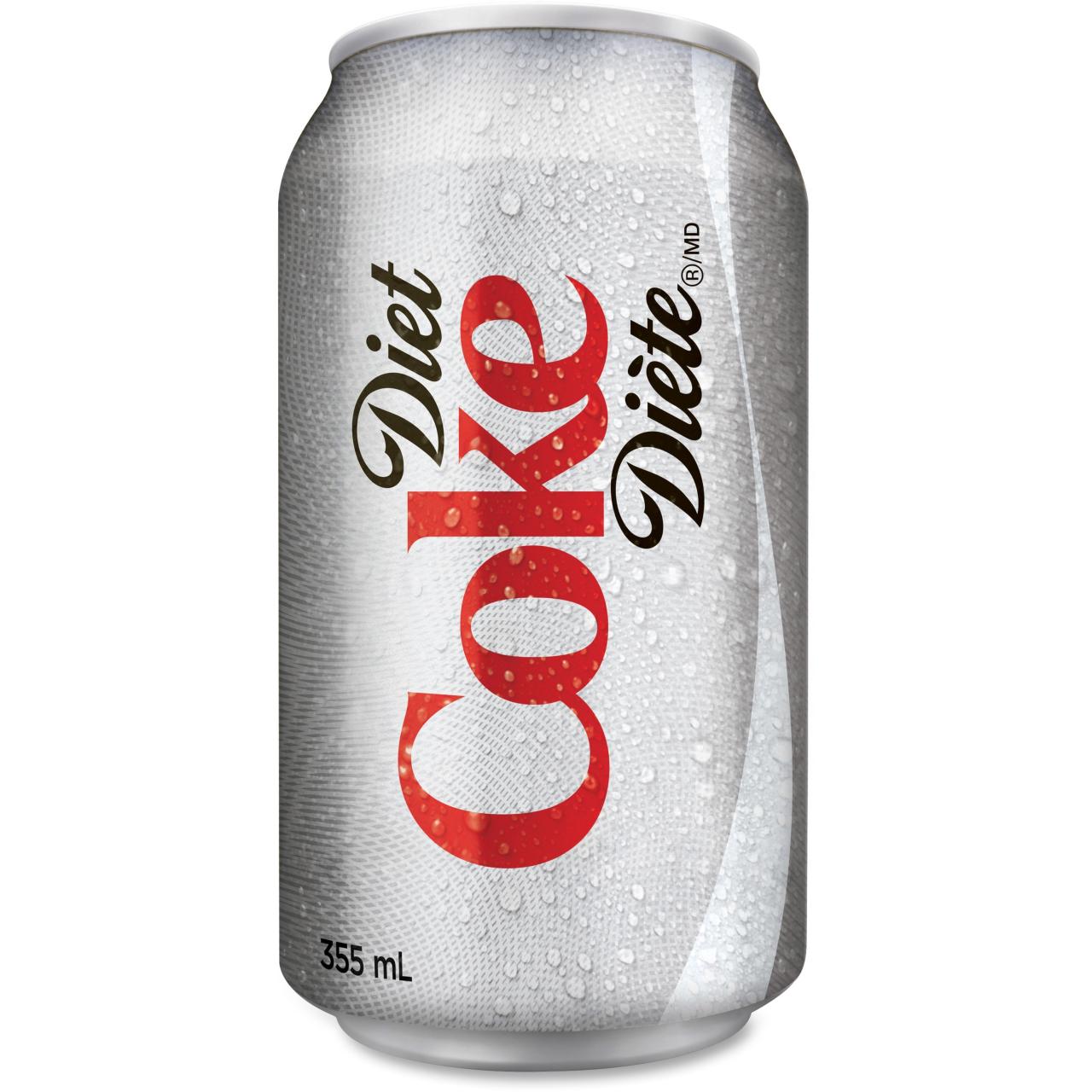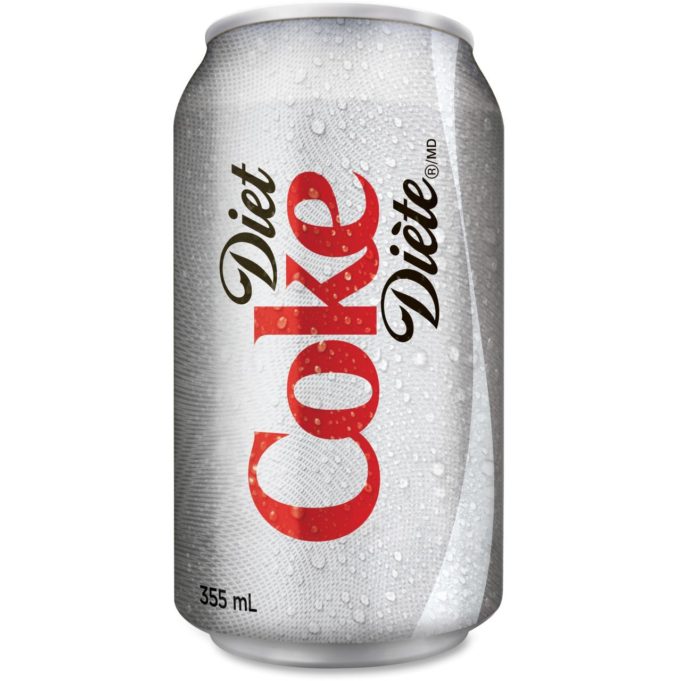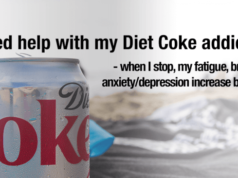Diet Coke, the bubbly beverage that promised zero sugar and maximum refreshment, has become a cultural icon. From its humble beginnings as a diet-conscious alternative to its widespread popularity, Diet Coke has carved a unique space in the world of soft drinks.
Its journey is a testament to the power of marketing, the changing tides of consumer preferences, and the enduring appeal of a classic, fizzy taste.
This article delves into the fascinating history of Diet Coke, exploring its origins, its impact on the soft drink industry, and its cultural significance. We’ll also examine the ingredients, marketing strategies, and environmental considerations surrounding this beloved beverage.
History of Diet Coke

Diet Coke, the iconic sugar-free soda, has a rich history that reflects the evolving landscape of the beverage industry and consumer preferences. Its journey from a niche product to a global phenomenon showcases the power of innovation, marketing, and the enduring appeal of a refreshing, guilt-free drink.
Origins and Initial Marketing Strategy
Diet Coke was born in 1982, a time when the concept of low-calorie, sugar-free beverages was gaining traction. Coca-Cola, ever the innovator, saw an opportunity to tap into this emerging market. The initial marketing strategy focused on positioning Diet Coke as a sophisticated and stylish alternative to regular Coke, targeting a demographic that was health-conscious yet desired the familiar taste of Coca-Cola.
This strategy was reflected in the product’s sleek, silver can design and its association with glamorous celebrities and upscale events.
Role in the Evolution of the Soft Drink Industry
Diet Coke played a pivotal role in shaping the soft drink industry. It demonstrated the potential for diet sodas to become mainstream, appealing to a broad audience beyond those seeking to manage their weight. This success paved the way for a wave of diet versions of popular beverages, further diversifying the market and catering to a growing demand for healthier options.
Initial Reception and Current Popularity
The initial reception of Diet Coke was positive, but it took time to gain widespread popularity. Consumers initially viewed diet sodas with skepticism, associating them with a lack of flavor or a medicinal taste. However, Diet Coke’s marketing campaign, emphasizing its taste and image, gradually won over consumers.
Today, Diet Coke is one of the best-selling soft drinks globally, a testament to its enduring appeal and the company’s ability to adapt to changing consumer preferences.
Ingredients and Composition
Diet Coke, the iconic zero-sugar beverage, boasts a unique blend of ingredients that create its signature taste and bubbly personality. Let’s dive into the world of Diet Coke’s components and understand their roles in this refreshing drink.
Ingredients and Their Roles
The ingredients in Diet Coke are meticulously chosen to achieve a balanced flavor profile while maintaining its zero-sugar status.
- Carbonated Water:The foundation of Diet Coke, carbonated water provides the bubbly texture and refreshing sensation. It’s the canvas upon which the other ingredients paint their flavors.
- Caramel Color:This ingredient lends Diet Coke its distinctive dark brown hue. It’s derived from the caramelization of sugar, but in Diet Coke, it’s used purely for color, adding no sweetness or calories.
- Phosphoric Acid:Phosphoric acid contributes to Diet Coke’s tangy flavor, balancing out the sweetness from the artificial sweeteners. It also acts as a preservative, extending the shelf life of the beverage.
- Aspartame and Acesulfame Potassium:These artificial sweeteners are the stars of the show in Diet Coke. They provide the sweet taste without adding any sugar or calories. Aspartame is about 180 times sweeter than sugar, while acesulfame potassium is about 200 times sweeter.
- Caffeine:The familiar pick-me-up, caffeine provides a gentle energy boost. It’s a natural stimulant found in coffee, tea, and chocolate, and in Diet Coke, it contributes to its refreshing and invigorating qualities.
- Natural Flavors:Diet Coke also contains a blend of natural flavors, which are carefully selected to mimic the taste of traditional Coke. These flavors are derived from various sources, including fruits, herbs, and spices, and they contribute to the complex and satisfying taste profile of the beverage.
Nutritional Profile
Diet Coke is a zero-calorie beverage, meaning it contains no sugar or carbohydrates. It also has no fat or protein. However, it does contain caffeine and artificial sweeteners.
| Beverage | Calories | Sugar (grams) | Caffeine (mg) |
|---|---|---|---|
| Diet Coke | 0 | 0 | 42 |
| Regular Coke | 140 | 39 | 34 |
| Orange Juice | 110 | 26 | 0 |
| Milk (1 cup) | 120 | 12 | 0 |
Potential Health Implications, Diet coke
The regular consumption of Diet Coke, like any other beverage, has potential health implications. While it’s zero-calorie and sugar-free, it contains artificial sweeteners and caffeine.
The long-term effects of consuming artificial sweeteners are still being studied. Some studies have suggested potential links between artificial sweeteners and metabolic disorders, but more research is needed to confirm these findings.
Excessive caffeine intake can lead to anxiety, insomnia, and headaches. The recommended daily intake of caffeine is up to 400 mg for most adults.
It’s essential to enjoy Diet Coke in moderation and as part of a balanced diet.
Marketing and Advertising
Diet Coke’s marketing journey is a testament to the power of clever advertising and adapting to changing consumer preferences. From its early days to its current campaigns, the brand has consistently sought to connect with its target audience and solidify its position as a refreshing and stylish beverage.
Diet Coke: the drink that promises zero calories and a whole lot of fizz. But let’s be real, if you’re looking to shed some pounds, just guzzling down the bubbly won’t do the trick. You’ll need to combine your Diet Coke habit with a solid plan for how to lose weight.
After all, even the most refreshing Diet Coke can’t outrun a bad diet. So, grab your gym clothes and your favorite sugar-free beverage, and get ready to conquer those cravings!
Evolution of Marketing Campaigns
Diet Coke’s marketing campaigns have evolved significantly over time, reflecting the changing cultural landscape and consumer tastes. Early campaigns emphasized the “diet” aspect, targeting health-conscious individuals. Later campaigns shifted towards emphasizing the “Coke” aspect, associating the brand with fun, excitement, and social gatherings.
- Early Campaigns (1980s):These campaigns focused on the health benefits of Diet Coke, featuring celebrities and athletes to promote the idea of a guilt-free indulgence. One memorable example is the “Just for the Taste of It” campaign, which featured a series of short commercials showcasing everyday people enjoying Diet Coke.
- Shift Towards Style and Fun (1990s):Diet Coke began to embrace a more stylish and playful image. Campaigns like “The Diet Coke Break” featured celebrities and models in glamorous settings, emphasizing the social aspect of enjoying the beverage.
- Modern Campaigns (2000s-Present):Diet Coke’s modern campaigns continue to focus on style and fun, but with a more contemporary twist. They often feature collaborations with popular artists and musicians, and leverage social media platforms to engage with consumers. Examples include the “Love is a Coke” campaign, which featured real-life couples sharing their love stories, and the “Share a Coke” campaign, which allowed consumers to personalize bottles with their names.
Key Elements of Brand Identity
Diet Coke’s brand identity is characterized by a number of key elements that have been consistently communicated through its advertising:
- Style and Sophistication:Diet Coke is often portrayed as a stylish and sophisticated beverage, appealing to consumers who value a refined taste and image.
- Fun and Enjoyment:Diet Coke is also associated with fun and enjoyment, emphasizing the social aspects of sharing the beverage with friends and family.
- Confidence and Empowerment:Diet Coke campaigns often feature confident and empowered individuals, suggesting that the beverage can help consumers feel good about themselves.
Examples of Successful Campaigns
Diet Coke has launched numerous successful campaigns over the years, demonstrating the brand’s ability to adapt to changing trends and connect with consumers.
Diet Coke: the drink that promises zero sugar and maximum fizz. But let’s be real, the real magic happens when you start using the right Keywords to find the perfect Diet Coke hack. You know, the ones that involve extra ice, a splash of lime, and maybe even a secret ingredient or two.
Because let’s face it, sometimes even the most beloved diet soda needs a little extra oomph.
- “Share a Coke” (2014):This campaign was a huge success, generating significant buzz and social media engagement. The campaign personalized Coke bottles with names, encouraging consumers to share the beverage with friends and family. This simple yet effective strategy tapped into the desire for personalization and connection, resonating with a wide audience.
- “Love is a Coke” (2017):This campaign focused on real-life love stories, showcasing the role that Diet Coke played in bringing couples together. By emphasizing the emotional connection associated with the beverage, the campaign resonated with a more mature audience and highlighted the brand’s ability to connect with consumers on a deeper level.
Cultural Impact
Diet Coke has become more than just a carbonated beverage; it has woven itself into the fabric of popular culture, appearing in movies, TV shows, and music, and becoming a symbol for various social groups.
Appearances in Popular Culture
Diet Coke has made its way into numerous films, television series, and music videos, solidifying its place in pop culture.
- In the movie “American Psycho” (2000), Patrick Bateman, the main character, is seen consuming Diet Coke throughout the film, contributing to his image as a materialistic and status-conscious individual.
- The iconic television series “Sex and the City” (1998-2004) featured Diet Coke as a regular drink for the main characters, showcasing its association with urban sophistication and cosmopolitan lifestyles.
- In the music video for “Single Ladies (Put a Ring on It)” by Beyoncé (2008), Diet Coke is featured prominently, further cementing its association with empowerment and confidence.
Representations of Social Groups
Diet Coke has been used to represent different social groups and demographics, often reflecting its association with specific values and lifestyles.
- In the 1980s and 1990s, Diet Coke was often marketed to women as a “feminine” drink, reflecting the growing awareness of women’s health and fitness.
- More recently, Diet Coke has been associated with the “yuppie” culture of the 1980s, reflecting its association with success, affluence, and consumerism.
- In the LGBTQ+ community, Diet Coke has been adopted as a symbol of acceptance and inclusivity, often seen at Pride events and gatherings.
Cultural Significance
Diet Coke’s cultural significance can be compared to other iconic beverages, such as Coca-Cola and Pepsi, each with their unique place in popular culture.
- Coca-Cola is often seen as a symbol of Americana, representing traditional values and nostalgia.
- Pepsi, on the other hand, has been associated with youth, rebellion, and innovation.
- Diet Coke, with its focus on health and wellness, has carved out its own space in popular culture, appealing to those seeking a lighter and more modern option.
Environmental Impact
Diet Coke, like many other products, has an environmental footprint. Its production, packaging, and consumption all contribute to environmental concerns, raising questions about its sustainability.
Packaging and Waste
The packaging of Diet Coke, primarily aluminum cans and plastic bottles, represents a significant part of its environmental impact.
- Aluminum production requires significant energy, leading to greenhouse gas emissions.
- Plastic bottles are derived from fossil fuels, further contributing to carbon emissions.
- The disposal of these containers can lead to landfill waste, with plastic bottles taking hundreds of years to decompose.
While Coca-Cola has made efforts to increase the use of recycled materials in its packaging, the overall volume of packaging remains substantial.
Carbon Footprint
The carbon footprint of Diet Coke encompasses the emissions associated with its entire lifecycle, from ingredient sourcing and production to transportation and consumption.
- The production of ingredients, such as sugar and artificial sweeteners, contributes to emissions.
- The transportation of raw materials, finished products, and packaging materials all generate emissions.
- The refrigeration of Diet Coke in stores and homes adds to energy consumption and emissions.
The carbon footprint of Diet Coke is comparable to other carbonated beverages, though specific figures can vary depending on factors like production methods, packaging, and transportation distances.
Sustainability Initiatives
Coca-Cola has implemented several initiatives to reduce the environmental impact of Diet Coke and its other products.
- The company is committed to using more recycled materials in its packaging and reducing its overall packaging weight.
- Coca-Cola is investing in renewable energy sources to power its operations and reduce its reliance on fossil fuels.
- The company is working to improve its water efficiency and reduce its water footprint.
Coca-Cola also supports recycling programs and encourages consumers to dispose of packaging responsibly.
The Future of Diet Coke
Diet Coke has enjoyed a long and successful run, but the future of the beverage is not without its challenges. The soft drink industry is undergoing a significant transformation, driven by evolving consumer preferences and growing health concerns. Diet Coke must navigate these trends to maintain its relevance and appeal to a new generation of consumers.
Diet Coke: the bubbly beverage that lets you indulge in the fizz without the guilt (or the sugar crash). But let’s be real, social gatherings are a minefield for dieters. How do you navigate the tempting buffet and endless rounds of drinks without losing your willpower?
Fear not, fellow dieters! Check out this awesome guide: How to diet and still enjoy social events without overeating. With these tips, you can conquer the social scene and still enjoy your Diet Coke in peace.
Because let’s face it, nothing beats the satisfying pop of that first sip!
Current Trends in the Soft Drink Industry
The soft drink industry is facing a number of challenges, including:
- Shifting Consumer Preferences:Consumers are increasingly seeking healthier beverage options with lower sugar content, natural ingredients, and functional benefits. This shift has led to a decline in sales of traditional sugary sodas, including Diet Coke.
- Growing Health Concerns:The link between sugary drinks and health problems such as obesity, diabetes, and heart disease has led many consumers to limit their consumption of these beverages. Diet Coke, despite being sugar-free, has also faced scrutiny over its artificial sweeteners.
- Increased Competition:The soft drink market is increasingly competitive, with new players emerging and established brands diversifying their product lines to cater to evolving consumer demands. This competition puts pressure on Diet Coke to innovate and differentiate itself.
Potential Future Innovations and Product Variations
To address these challenges, Diet Coke can explore several avenues for innovation and product variations:
- Natural Sweeteners:Diet Coke could explore the use of natural sweeteners, such as stevia or monk fruit, to appeal to consumers seeking healthier alternatives. These sweeteners can provide a similar taste profile to artificial sweeteners while avoiding the potential health concerns associated with them.
- Functional Ingredients:Diet Coke could incorporate functional ingredients, such as electrolytes, vitamins, or antioxidants, to appeal to consumers seeking beverages that provide health benefits beyond simply quenching thirst. This approach could position Diet Coke as a healthier option compared to traditional sodas.
- Flavour Experimentation:Diet Coke could experiment with new and exciting flavours to appeal to a wider range of consumers. This could include introducing limited-edition flavours, collaborating with other brands, or exploring regional flavours. For example, Diet Coke could introduce a limited-edition “Mango Tango” flavour, tapping into the popularity of tropical flavours.
- Sustainable Packaging:Diet Coke could adopt more sustainable packaging practices, such as using recycled materials, reducing packaging size, or exploring alternative packaging options. This approach could appeal to environmentally conscious consumers and enhance the brand’s image.
Predictions for the Long-Term Success of Diet Coke
Despite the challenges, Diet Coke has a strong brand identity and a loyal customer base. To ensure long-term success, Diet Coke must adapt to evolving consumer preferences and embrace innovation.
- Maintaining Brand Relevance:Diet Coke must continue to refresh its brand image and appeal to younger generations by embracing new trends and incorporating them into its marketing campaigns. This could involve collaborating with influencers, creating engaging digital content, and sponsoring events that resonate with its target audience.
- Product Diversification:Diet Coke can explore new product variations, such as flavoured varieties, zero-calorie options, and functional beverages, to cater to diverse consumer needs and preferences. This strategy can attract new customers while maintaining its core customer base.
- Embracing Sustainability:Diet Coke must prioritize sustainability in its operations, from sourcing ingredients to packaging and distribution. This approach can enhance its brand image and appeal to environmentally conscious consumers, who are increasingly seeking sustainable brands.
Conclusion: Diet Coke
Diet Coke’s story is a testament to the power of innovation and adaptation in the ever-evolving world of beverages. From its humble beginnings as a diet-conscious option to its status as a cultural icon, Diet Coke has proven its enduring appeal.
As we move forward, it will be interesting to see how Diet Coke continues to navigate the changing landscape of consumer preferences and environmental concerns. One thing is certain: the iconic “Diet Coke” logo and the signature fizz will continue to hold a special place in our collective memories, reminding us of a time when a simple soda could be a source of both refreshment and cultural significance.
Essential FAQs
Is Diet Coke really sugar-free?
Yes, Diet Coke is marketed as sugar-free, but it does contain artificial sweeteners like aspartame and acesulfame potassium.
Does Diet Coke have caffeine?
Yes, Diet Coke contains caffeine, similar to regular Coke.
Is Diet Coke bad for you?
The potential health implications of consuming Diet Coke regularly are still debated. Some studies suggest possible links to certain health conditions, while others find no significant negative effects. As with any beverage, moderation is key.
What are the different flavors of Diet Coke?
Beyond the original Diet Coke, there are several flavor variations available, including Diet Coke with Lime, Diet Coke Cherry, and Diet Coke Ginger Lime.
























